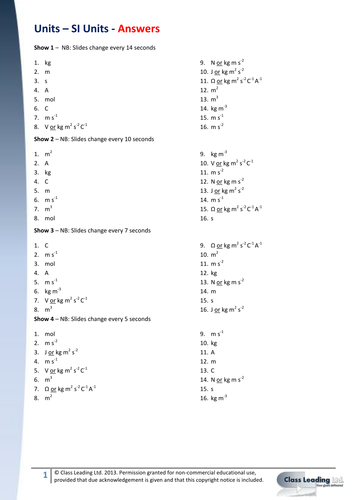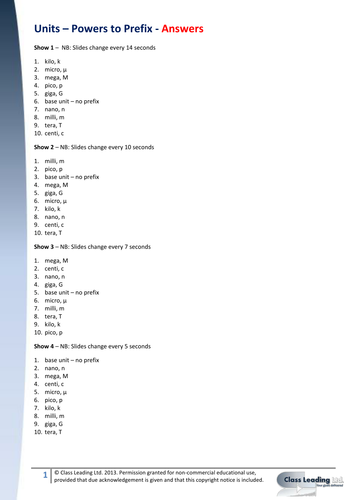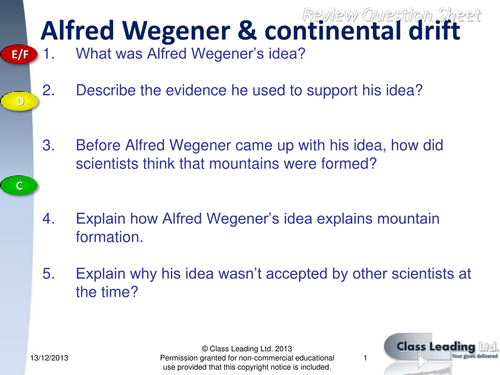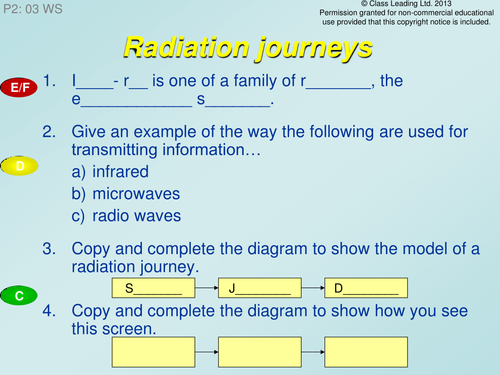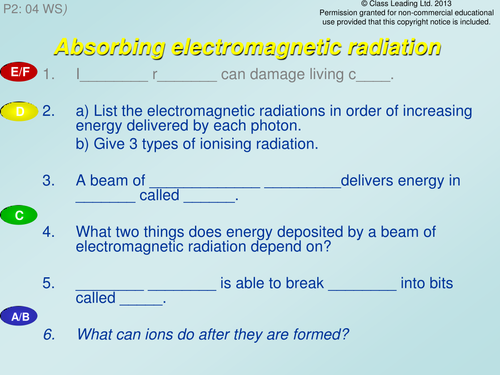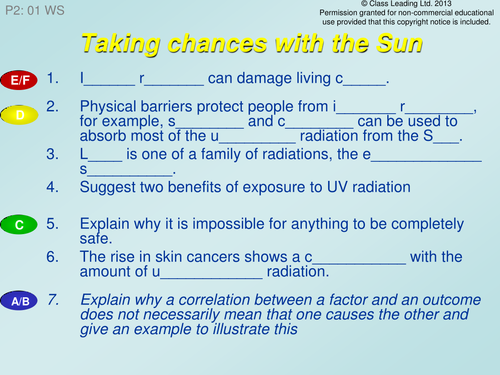312Uploads
251k+Views
191k+Downloads
Physics

GCSE Physics/ Science flash cards (suitable to make at home)
These are flash cards for GCSE Physics/ Science. They cover key facts that pupils need to learn.
They are designed to be suitable for pupils to print at home and make up the cards.
They include advice as to how to use the flash cards to help them to make the best use of their time when learning.
Flash cards sets included are:
Physics equations that need to be learnt
Circuit symbols, including some common questions linked to the symbols
Force and motion sketch graphs
Designed for AQA Science.

Thinking About - Coke & Mentos
This activity is part of the ‘Thinking About’ Series.
The sequence aims to think through the investigative process using a very engaging activity. It involves learners thinking through the control and measurement of variables.
It can be used to produce and analyse graphs and think through challenging explanations.
There are also some surprising events for further challenge if different soft drinks are used.
In this activity there is a PowerPoint, an activity guide and making and launching guides (which it is recommended that you laminate!)

Sound waves on an oscilloscope - with sound
This resource is an interactive slideshow aimed at pupils in KS3/4. It shows the screen of an oscilloscope with different waveforms of sounds. Embedded in the slideshow are sounds that would produce that waveform, so that pupils can hear the sound and see the waveform at the same time. There are slides that show the relationship between the waveform and the sound.
There are also questions at the end that can be used to check that pupils can recall and understand the relationship between the waveform and the sound.
There are worksheets included that can be printed on A4 and included in booklets or pasted into larger books. The worksheets can also be easily cut or folded in half for pupils using smaller books.

Maths Skills - Units - SI Units Starter
These are a sequence of powerpoint shows designed as an instant engagement task (rolling on screen as learners enter the room for immediate engagement with learning). Learners write down the the SI units for the named quantity. More able learners could provide SI units in terms of fundamental base units. They are essentially the same task (with rearranged slides) but get progressively more demanding (as the changeover of slide gets faster) as the numbers in brackets increase. Start the students with (1) and then as they get faster, use the more demanding versions

Electricity: Modelling current in series and parallel circuits
This model is an animated PowerPoint slideshow. It shows current as a flow of charge around series and parallel circuits.
It allows you to compare current flow in series circuits with one and two lamps. It also allows you to increase the potential difference for the circuit. This allows you to compare current flow.
It also shows two lamps in parallel, allowing you to see the current before and after the branches in the circuit.
The model is quite simple to allow pupils to make sense of the current flow model quickly and help them to understand how it works.

Food chains & energy transfer (updated)
This is an editable worksheet based activity that includes some higher order thinking to explore the ideas around energy transfer in simple food chains. Two versions are included, one with revised GCSE (1-9) grades, the other without. (please note that grade indications are only approximate). Why not try getting learners to choose a selection of questions to answer (e.g. do Q1-4 or Q3-8) An answer sheet is included.
This resource was originally designed for OCR 21st Century Science unit B3, but still applies across a range of exam specifications.
Keywords: energy, transfer, food chain, efficiency

Data Handling - Key words
This is a small collection of key words related to data handling. They are designed as a display tool. Remember if laminating to use matt laminates for wall displays to avoid reflection problems.
Key words: range, mean, true value, average, real difference.

Maths Skills - Units - Powers to Prefix Starter
These are a sequence of powerpoint shows designed as an instant engagement task (rolling on screen as learners enter the room for immediate engagement with learning). Learners write down the prefix that represents the power of ten multiplier. They are essentially the same task (with rearranged slides) but get progressively more demanding (as the changeover of slide gets faster) as the numbers in brackets increase. Start the students with (1) and then as they get faster, use the more demanding versions.

Models of the atom - Comparison
This activity aims to clarify thinking around the models of the atom that scientists use, and why we have more than one model.
A slideshow that compares different models of the atom, the timeline of discovery and summarises the uses of each model.
Key words: Model, Plum-pudding, Rutherford, Dalton, nuclear.

Thinking About - Do unbalanced forces cause movement?
This activity is designed to probe preconceptions about the idea that forces cause movement. Children will often think, based on their prior experience of stationary objects that introducing an unbalanced force will make something move in the direct of the force. This activity gives first hand experience of a situation that involves unbalanced forces on a moving object and helps challenge this preconception.

What killed the Mammoths (editable)
This is a collection of resources that would work well as a lesson. A lesson outline is provided showing how the resources might be used together. There is an email designed to set the scene and for use as as a ‘hook’. There are also sheets for learners to summarise their learning (tweet).
You may want to supplement the resources with pictures of a woolly mammoth (link only due to copyright restrctions) and video ‘footage’ e.g from Ice Age movie.
This was designed as lesson for a KS3 nurture group although would be suitable for KS2 or other KS3 groups with adaptation.
Please note that this is an editable version. A free, non-editable version is also available.
Bundle

Thinking About - Primary Investigations
In this bundle, two resource packs are available - Thinking About: Coke & Mentos and Thinking About: Goldilocks & the Three Bears.

James Hutton & Deep Time - graded questions
This activity contains a powerpoint with graded questions & answers and matching pupil activity sheets, designed to be used at the end of a lesson and/or the start of the next lesson to review previous learning. The questions are based on OCR 21st Century Science Specification, although could be used with other exam boards.
Clicking through the show reveals answers one a time. There are two slightly different activity sheets for differentiation - one has key words, the other without. These reduce to A5 easily, the ideal size for most pupils. Please note grades are approximate.

Alfred Wegener & Continental Drift - questions
This activity contains a powerpoint with graded questions & answers and matching pupil activity sheets, designed to be used at the end of a lesson and/or the start of the next lesson to review previous learning. The questions are based on OCR 21st Century Science Specification, although could be used with other exam boards.
Clicking through the show reveals answers one a time. There are two slightly different activity sheets for differentiation - one has key words, the other without. These reduce to A5 easily, the ideal size for most pupils. Please note grades are approximate.

Radiation journeys - graded questions
This activity contains a powerpoint with graded questions & answers and matching pupil activity sheets, designed to be used at the end of a lesson and/or the start of the next lesson to review previous learning. The questions are based on the previous OCR 21st Century Science Specification unit P2, although could be used with other exam boards.
Clicking through the show reveals answers one a time. These reduce to A5 easily, the ideal size for most pupils. Please note grades are approximate.

X-ray safety - graded questions
This activity contains a powerpoint with graded questions & answers and matching pupil activity sheets, designed to be used at the end of a lesson and/or the start of the next lesson to review previous learning. The questions are based on the previous OCR 21st Century Science Specification unit P2, although could be used with other exam boards.
Clicking through the show reveals answers one a time. These reduce to A5 easily, the ideal size for most pupils. Please note grades are approximate.

Absorbing EM radiation - graded questions
This activity contains a powerpoint with graded questions & answers and matching pupil activity sheets, designed to be used at the end of a lesson and/or the start of the next lesson to review previous learning. The questions are based on the previous OCR 21st Century Science Specification unit P2, although could be used with other exam boards.
Clicking through the show reveals answers one a time. These reduce to A5 easily, the ideal size for most pupils. Please note grades are approximate.

Sunlight and life - graded questions
This activity contains a powerpoint with graded questions & answers and matching pupil activity sheets, designed to be used at the end of a lesson and/or the start of the next lesson to review previous learning. The questions are based on the previous OCR 21st Century Science Specification unit P2, although could be used with other exam boards.
Clicking through the show reveals answers one a time. These reduce to A5 easily, the ideal size for most pupils. Please note grades are approximate.

Taking chances with the Sun - graded questions
This activity contains a powerpoint with graded questions & answers and matching pupil activity sheets, designed to be used at the end of a lesson and/or the start of the next lesson to review previous learning. The questions are based on the previous OCR 21st Century Science Specification unit P2, although could be used with other exam boards.
Clicking through the show reveals answers one a time. These reduce to A5 easily, the ideal size for most pupils. Please note grades are approximate.

Climate change (1) - graded questions
This activity contains a powerpoint with graded questions & answers and matching pupil activity sheets, designed to be used at the end of a lesson and/or the start of the next lesson to review previous learning. The questions are based on the previous OCR 21st Century Science Specification unit P2, although could be used with other exam boards.
Clicking through the show reveals answers one a time. These reduce to A5 easily, the ideal size for most pupils. Please note grades are approximate.




